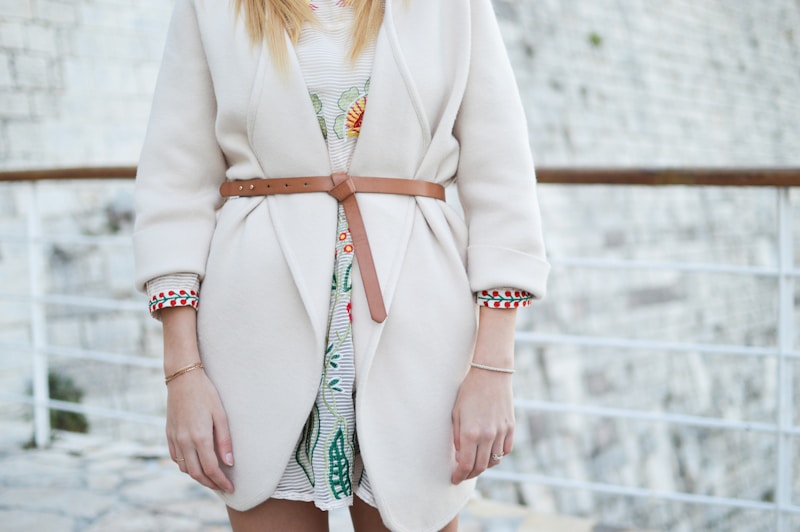Redefining Necklines with Sustainable Fabrics: A Fashion Revolution
Redefining Necklines with Sustainable Fabrics: A Fashion Revolution
In the ever-evolving world of fashion, necklines have always played a pivotal role in defining the style and elegance of garments. However, as sustainability becomes a crucial factor in consumer choices, the industry sees a transformative shift towards eco-friendly materials. This article delves into the concept of redefining necklines using sustainable fabrics, exploring what this means for designers, consumers, and the environment.
Understanding Sustainable Fabrics
Sustainable fabrics are those that are produced with environmentally-friendly practices, minimizing harm to the planet while maximizing the use of renewable resources. These fabrics can include organic cotton, linen, hemp, Tencel, and recycled materials. The rise in eco-consciousness among consumers has prompted fashion brands to rethink their material choices and embrace sustainability, particularly in innovative areas such as neckline designs.
The Importance of Necklines in Fashion
Necklines, the top edges of garments that frame the neck and collar area, play a significant role in overall garment aesthetics. They can enhance or detract from a wearer’s figure and have the power to make a fashion statement. From the classic crew neck to the daring plunge, necklines influence everything from style to comfort. Redefining these designs with sustainable fabrics not only modernizes fashion but also aligns with responsible luxury.

Types of Necklines and Their Eco-friendly Alternatives
| Neckline Style | Description | Sustainable Fabric Option |
| V-Neck | A neckline that dips down in the front to form a "V". | Organic Cotton or Tencel |
| Boat Neck | A wide neckline that goes across the collarbone. | Hemp or Recycled Polyester |
| Halter Neck | A style that straps around the back of the neck leaving shoulders bare. | Organic Bamboo Fabric |
| Sweetheart Neckline | A heart-shaped neckline often used in dresses. | Eco-friendly Silk or Tencel |
| High Neck | A style that rises higher on the neck. | Eucalyptus Fiber or Organic Linen |
As outlined in the table above, there are numerous neckline styles available, each capable of being elegantly produced with sustainable fabrics. This not only enhances the aesthetic of the garments but also caters to eco-conscious consumers who are increasingly making purchase decisions based on sustainability.
Benefits of Sustainable Fabrics in Neckline Design
The integration of sustainable fabrics into neckline design yields multiple benefits:
- Environmental Impact: Sustainable fabrics typically have a lower carbon footprint than conventional options, reducing pollution and resource depletion.
- Innovation in Textiles: The introduction of new technologies allows for the development of sustainable fabrics with unique textures and aesthetics, enhancing modern neckline styles.
- Consumer Demand: With more consumers gravitating towards ethical fashion, brands that adopt sustainable practices are more likely to resonate with their target audience.
- Quality and Durability: Eco-aware materials often offer superior quality, leading to longer-lasting garments.
Case Studies: Brands Leading the Charge
Many brands are pioneering the use of sustainable fabrics in their neckline designs. Here are a few notable examples:
1. Reformation
Reformation is known for its stylish, sustainable clothing. The brand utilizes deadstock fabrics and eco-friendly materials to create flattering necklines that appeal to a modern audience. Their commitment to sustainability is reflected not only in the fabric but also in the entire production process.
2. Stella McCartney
A luxury brand, Stella McCartney has been a strong advocate for sustainable fashion. By innovating with vegan and eco-friendly textiles, she offers chic garments with a variety of neckline styles while remaining committed to environmental ethics.
3. Patagonia
Primarily known for outdoor wear, Patagonia incorporates recycled materials into its designs, including necklines. Their approach emphasizes functionality and sustainability, proving that eco-fashion can thrive in all clothing categories.
How Consumers Can Embrace Sustainable Necklines
For those interested in adopting neckline styles that reflect sustainability, consider the following tips:
- Research Brands: Look for brands that prioritize sustainable practices and offer transparency about their materials and methods.
- Explore Second-hand Options: Thrift shops and online platforms provide opportunities to find unique garments with various necklines while promoting recycling.
- Support Local Artisans: Local designers often use sustainable materials for their creations. Supporting them not only nurtures your local economy but also encourages eco-friendly practices.
Final Thoughts: The Future of Fashion and Sustainability
As fashion continues to evolve, the emphasis on sustainability will undoubtedly redefine how necklines and overall designs are approached. Choosing sustainable fabrics benefits not only the planet but helps create a stylish future. As consumers become increasingly aware of their purchasing power, they can drive change within the fashion industry. Join this movement by embracing necklines made from sustainable materials, and feel confident knowing that your style reflects a commitment to a more sustainable world. Pay attention to these key factors when selecting your next wardrobe pieces and consider the impact of your choices on the environment.
In conclusion, redefining necklines with sustainable fabrics is becoming imperative in the fashion industry. By making informed choices, consumers can support ethical practices, leading to a more sustainable future in fashion where style and environmental consciousness coexist harmoniously.
